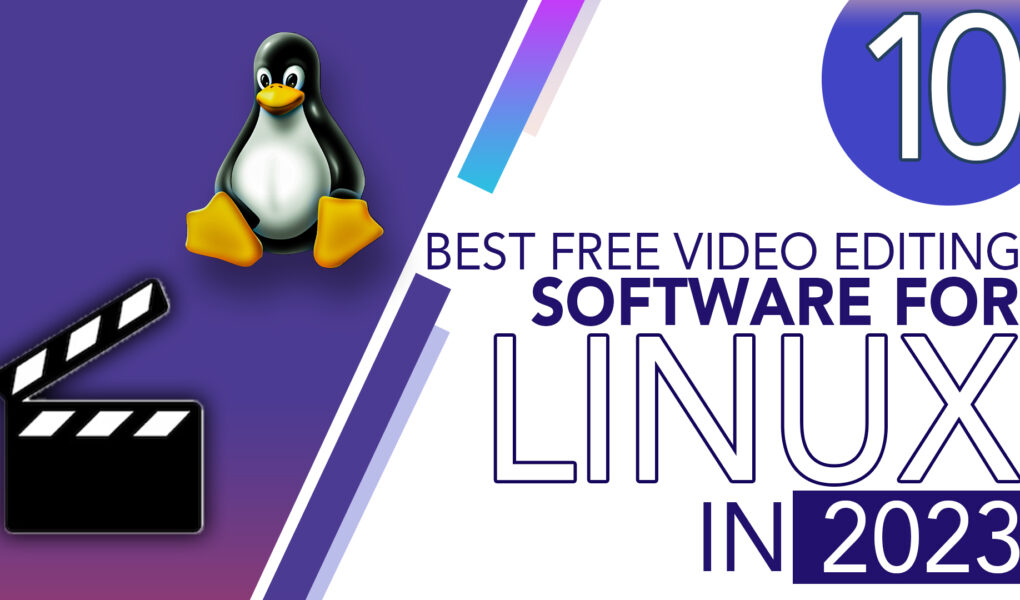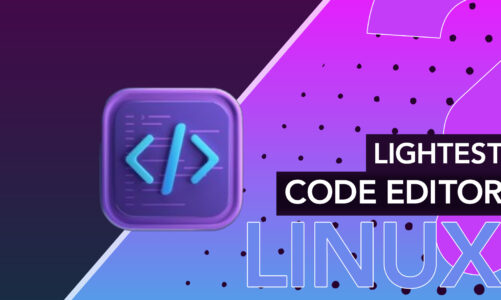Video has become a vital aspect of our lives, encompassing professional work like product demos and marketing campaigns and personal projects like vlogs and home movies. As a Linux user, you may be wondering what your options are for video editing software.
Well, you’re in luck! Explore the top 10 free video editing software for Linux in 2023, including options for both beginner and advanced users in this comprehensive guide.
10 Best Free Video Editing Software for Linux in 2023
Video editing is an important aspect of creating high-quality content, and that’s why choosing the best video editing software is crucial. Let’s get onto the list and their details.
- Kdenlive
- DaVinci Resolve
- Blender
- OpenShot
- Magisto
- Shotcut
- Lightworks
- WeVideo
- Videobolt
- Flowblade
1: Kdenlive
Kdenlive is a highly-regarded, free and open-source video editing software that has been gaining popularity among Linux users. This software offers a user-friendly interface and a robust set of features that make it an excellent choice for video editors of all skill levels.
With support for multi-track editing, keyframe-based animation, and a vast collection of video effects, Kdenlive provides users with a wide range of tools to bring their creative visions to life.

Additionally, Kdenlive’s integration with other free software, such as FFmpeg, ensures compatibility with a variety of hardware and operating systems, producing high-quality results every time. With a thriving development community, Kdenlive continues to evolve and improve, making it a great option for Linux users who demand a powerful yet accessible video editing experience.
Pros
Compatible with various systems
Beginner-friendly
Wide range of features
Cons
Stability issues
2: DaVinci Resolve
DaVinci Resolve is a top-notch video editing software that has earned a reputation for excellence in the film and video industry. In 2023, it is widely considered as one of the best options for Linux users thanks to its extensive features, versatility, and exceptional level of customization.

It boasts a comprehensive suite of tools for color correction, audio post-production, and visual effects, which makes it a one-stop shop for professional video editors. Its compatibility with numerous file formats, its ability to support collaboration and sharing, and its commitment to continuous updates, solidify its position as a sought-after video editing solution for Linux users.
Pros
Robust editing tools
Compatibility with Various File Formats
High Level of Customization
Frequent updates
Cons
Resource-Intensive
3: Blender
Blender, a free and open-source 3D software, has emerged as a top choice for video editing due to its rich features and versatility. It offers a comprehensive set of video editing tools, including non-linear editing, masking, and keyframe animation, making it suitable for both professional and amateur video editors alike.

In 2023, Blender continues to be a premier video editing software option for Linux users due to its ongoing updates, large user and developer community, and compatibility with multiple media formats. As an open-source platform, Blender is always improving to cater to the ever-changing needs of its users, providing a high-quality and budget-friendly solution for video editing on Linux.
Pros
Compatible with multiple media formats
Large user and developer community
Continuously updated and improved
High-quality and budget-friendly solution
Cons
User interface can be overwhelming
4: OpenShot
One of the key features of OpenShot is its 4K resolution support, enabling users to produce high-quality, professional-looking videos. OpenShot also provides 3D animation capabilities, allowing users to add a new dimension to their projects. With unlimited tracks and layers, users have the flexibility to work with a multitude of elements within a single project.

The software boasts a wide range of video and audio effects, making it simple for users to enhance their videos to a professional standard. It is also compatible with various file formats, making importing and exporting projects effortless.
OpenShot is regularly maintained and updated, ensuring it remains attuned to the latest software and hardware.
Pros
Support for 4K resolutions
Animation capabilities
Unlimited tracks and layers
Active development and maintenance
Cons
Can be resource-intensive for large projects
5: Magisto
Magisto is a cutting-edge cloud-based video editing solution that streamlines the movie-making process. With a focus on ease and efficiency, the software provides a simple means of turning media files into polished and engaging motion pictures.
Boasting a user-friendly interface, Magisto allows users to effortlessly generate compelling video content with minimal effort. The program offers a comprehensive suite of features, including the ability to upload photos, utilize premium editing styles, download unlimited high-definition movies, and extend the length of existing movies through scene rearrangement, title and credit insertion, and the use of commercially licensed music.
Whether for video marketing or content creation, Magisto offers a range of in-built editing styles to choose from, making it an ideal solution for those seeking to produce high-quality video content.
Pros
Cross-platform compatibility
Cloud-based
Reasonably priced, with a free version available with limited features
Cons
Limited features in the free version
6: Shotcut
Shotcut is another prominent video editing solution for Linux that can be compared to the likes of Kdenlive and OpenShot. Although it offers similar features, Shotcut takes it a step further with support for 4K videos. With its extensive support for audio and video formats, transitions, and effects, Shotcut is a comprehensive and powerful video editing tool. It also provides external monitoring capabilities, making it a top choice for video editing on Linux.

With its native timeline editing feature, users can effortlessly mix and match resolutions and frame rates within a project. The multitrack timeline, complete with thumbnails and waveforms, offers a clear visual representation of audio and video elements, simplifying the editing process.
Pros
All-purpose video editor
External monitoring support
Cross-platform compatibility
Cons
Beginners may find it hard to understand UI
7: Lightworks
Lightworks is a top-tier video editing software that is highly regarded by Linux users for its professional-grade features and intuitive interface. As a cross-platform editor, Lightworks is available on Linux, macOS, and Windows, providing users with a wide range of options when it comes to operating systems.

With its non-linear editing capabilities and support for resolutions up to 4K, Lightworks is a versatile tool for video editors of all levels. The software features real-time audio and video FX and provides access to a collection of royalty-free audio and video content.
The timeline editing and trimming functions are user-friendly, and the lo-res proxy workflows for 4K make the editing process smoother and more efficient. Lightworks also supports drag-and-drop functionality, providing users with a quick and simple way to organize their projects.
The software comes in three versions: Lightworks Free, Lightworks Create, and Lightworks Pro. The Pro version offers additional features like higher resolution support, 4K, and Blu Ray support, making it a great choice for more demanding projects.
Pros
Easy Timeline Editing and Trimming
Royalty-free Audio and Video Content
Real-time Audio and Video FX
Drag and Drop Support
Cons
Non-Open Source
8: WeVideo
WeVideo’s cloud-based nature enables seamless collaboration with others, allowing multiple users to edit the same footage at the same time.
Moreover, its Linux compatibility means you never have to worry about device compatibility problems. With WeVideo, you can combine locally stored media with previously uploaded media and bring your vision to life with ease.

With its intuitive design and robust features, users can easily record, edit, and watch high-quality movies and share them with others. Its use of JumpStart technology sets it apart from other video editing software and revolutionizes the way you create and share videos.
Pros
Cloud-based and cross-platform capabilities
Robust features and JumpStart technology
Intuitive design and user-friendly interface
Cons
Additional costs for advanced features and storage
9: Videobolt
Videobolt streamlines the process of creating daily video content tailored to specific requirements, ranging from routine social media films to large-scale, data-driven video projects.
With a user-friendly interface, anyone can easily create high-quality videos, even without prior video editing experience. The platform offers access to over 1,500 professionally designed video templates created by industry experts, using visual effects technology developed in Hollywood and supported by a growing community of talented video producers.

Adding content and branding is simple and straightforward, requiring only a few clicks within the web form. Your final product can be downloaded in Full HD or 4K resolution, ready for use on any channel, with no licensing restrictions to worry about.
Pros
Visual effects technology
Full HD and 4K resolution download options
No licensing restrictions
Cons
Dependent on the template selection
10: Flowblade
Flowblade provides a range of powerful tools, including support for a wide range of video, audio, and image formats, video transitions and filters, and a multitrack timeline that includes thumbnails and waveforms. This makes it easy to manage and edit multiple tracks, resulting in high-quality and professional-looking videos.

One of the standout features of Flowblade is its proxy editing support, which enables users to edit high-resolution video files smoothly and efficiently. This is especially useful for professional video editors who work on large and complex video projects.
Pros
Support for a wide range of formats
Video transitions and filters
Lightweight and fast
Proxy editing support
Cons
Limited to Linux operating systems
Final Thought
The open-source nature of Linux provides a wide range of options for video editors, ranging from basic to advanced. From Kdenlive to OpenShot, and Blender, each of these software has its own unique features, making it essential to choose the one that suits your specific needs. Read out and do editing the best way.




